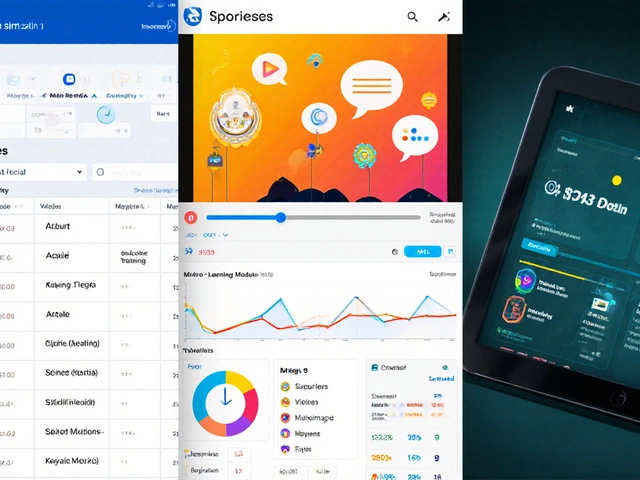If you're thinking about jumping into the coding world, cost is probably weighing on your mind. Coding classes can range from free to a jaw-dropping $20,000 for some bootcamps! Yikes, right? But don't worry; there's a method to the madness behind these numbers.
First things first, different types of classes come with various price tags. If you're going for an online course, you might only need to fork out a couple of hundred bucks. These are great if you need something flexible around your work schedule or family time. Meanwhile, bootcamps, known for their intensive, hands-on approach, can be pricey but are often worth it due to the rapid learning and job prospects they promise.
- Understanding Different Types of Coding Classes
- Factors Affecting the Price of Coding Classes
- Comparing Free and Paid Options
- Tips for Choosing a Coding Class Within Your Budget
Understanding Different Types of Coding Classes
So, you're ready to code, but where do you start? The coding class landscape isn't one-size-fits-all, and that's actually a good thing because it lets you pick what fits your style and budget.
First, let's break it down with coding classes cost. You've got three main flavors: self-paced online courses, full-blown bootcamps, and university programs.
Self-paced online courses: These are like the Netflix of learning—binge at your own speed. Websites like Coursera or Udemy offer courses for as low as $10 during sales, which is a sweet deal if you’re just dipping your toes into coding. These courses usually focus on specific languages or frameworks, so they're perfect if you've got a particular skill in mind.
Bootcamps: These are the rockstars of the coding world. Think of them as crash courses that can last from a few weeks to a few months. They're intense, but they often promise a lot, including job placements. Costs can range from $7,000 to $20,000, but for that, you usually get mentorship, hands-on projects, and networking opportunities.
| Type of Class | Duration | Average Cost |
|---|---|---|
| Self-paced Online Courses | Varies | $10 - $200 |
| Bootcamps | 3 to 6 months | $7,000 - $20,000 |
| University Programs | 2 to 4 years | $40,000 per year |
University programs: Going to college for computer science is the traditional route. It’s thorough and respected but also the most expensive and time-consuming. Annual fees can hit $40,000 depending on where you choose to study, but it's a comprehensive way to learn coding alongside other tech skills. If you're after a deep dive into computer science and can afford the time and expense, this is your jam.
These options have their own benefits and drawbacks, but the key is to find a balance between what you can afford and what will give you the skills you need.
Factors Affecting the Price of Coding Classes
Ever wonder why some coding classes cost an arm and a leg while others seem like a total bargain? There are a bunch of factors that mess with the price of these courses, and knowing them can help you make a smart choice.
First off, the length and intensity of a course are big players in the pricing game. Short courses, lasting maybe a few weeks, cost less because they take less time and resources to deliver. But those immersive coding bootcamps that stretch over several months and promise to make you job-ready? They naturally come with heftier price tags.
Then there's the mode of delivery. Online courses, especially self-paced ones, often cost less than in-person classes. This is because they don't require physical classroom space, reducing the overhead costs for providers. Plus, you won't have to worry about commuting, which can save you extra cash.
Another thing to watch out for is the content depth and specialization. A basic intro to Python might be cheap, but if you want to dive into specialized areas like AI or blockchain, expect those price tags to jump. These advanced topics require more resources and expert instructors.
Speaking of instructors, the people teaching you have a big impact on price. Courses led by industry veterans or celebrity instructors (yep, those exist) tend to cost more. You're not just paying for knowledge but also their experience and reputation.
Also, keep an eye on additional perks. Some programs bundle in career services, job placement guarantees, or fancy software tools, which can bump up costs. These extras might really pay off if you’re aiming to switch careers and get a foot in the tech door.
Finally, location can be a wild card. If you're considering in-person classes, schools in tech hubs like San Francisco or New York might charge more due to the higher demand and living costs in these areas. But with many people opting for online learning post-2020, this is becoming less of a factor.

Comparing Free and Paid Options
So, you're caught between free and paid coding classes and wondering which road to take. Let's untangle this conundrum.
The internet is swarming with free coding resources. Websites like Codecademy, Khan Academy, and freeCodeCamp offer extensive material for beginners. They’re like the gateway drug to programming. These platforms provide tutorials on essential languages like HTML, CSS, and JavaScript. Perfect if you're dipping your toes in or want to learn at your own pace without shelling out a dime.
On the flip side, paid options, including courses on platforms like Udemy or Coursera, often offer structured learning paths and certifications. This isn't just about flexing a piece of paper—certs can seriously matter when you're job hunting. These classes can run from $20 to a few hundred dollars. Not terrible if you consider it an investment in your future self.
| Type of Class | Cost Range |
|---|---|
| Free Online Courses | $0 |
| Paid Online Courses | $20 - $300 |
| Coding Bootcamps | $5,000 - $20,000 |
Now, the big guns—coding bootcamps. These can be pricey, ranging from $5,000 to $20,000, but if you're serious about a career change, they can be worth every penny. Bootcamps usually offer immersive training, mentorship, and sometimes job placement support. It's intense but can fast-track you into a tech job, often in months.
So, what's your vibe? If you're on a budget and self-motivated, start with free stuff. But if structure, accountability, and quicker results appeal to you, consider spending on paid courses or a bootcamp. Whatever the path, the world of coding is open for you!
Tips for Choosing a Coding Class Within Your Budget
Picking the right coding class that fits your budget can feel like choosing the perfect pizza topping—tricky, but totally worth it. Here are some pointers to make sure you're getting the best bang for your buck.
First, determine your learning goals. Are you seeking a new career, or just beefing up your skillset? If you're aiming for a career switch, investing in a pricier bootcamp might pay off in the long run. Bootcamps often come with career services and job placement guarantees, which can make the hefty cost worthwhile.
Next, check out student reviews and ratings. They’re like the Yelp reviews of the coding world. Fellow learners' experiences can give you a no-nonsense view of the course quality and how much support you'll really get. A former student from a New York-based bootcamp once said,
"The support from instructors and career coaches was the real deal; it’s what set this program apart."
Don't forget to look for scholarships or discounts. Many coding schools offer financial aid or pay-as-you-go plans, making it easier to manage the cost. Some also have income share agreements (ISAs) where you pay a percentage of your future salary after you land a job. Kinda risk-free, huh?
Also, ponder over the type of learning style that suits you. Online courses tend to be cheaper and offer flexibility, whereas in-person classes provide a social learning environment with direct teacher interaction.
- For self-paced learners, platforms like Udemy or Coursera offer online options starting as low as $10.
- For immersive learning, look into bootcamps like General Assembly or Flatiron School—just prepare for their steeper tuition.
Finally, consider the free coding resources available. You can try platforms like Codecademy or freeCodeCamp to get a sense of coding without spending anything up front. These resources can be the testing ground before you decide to commit financially.
Remember, investing in your education is never a bad call, but make sure it aligns with your financial situation and learning ambitions. With some careful planning and research, you'll find a coding class that suits both your pocket and your brain.








